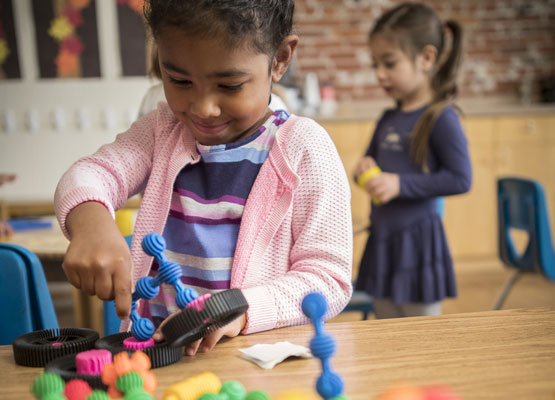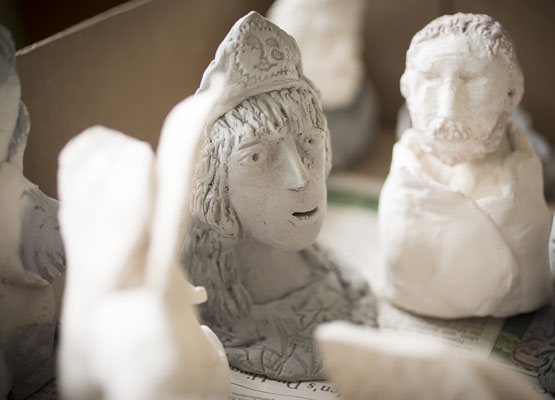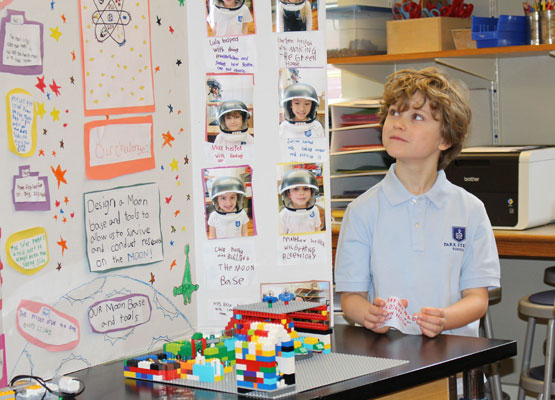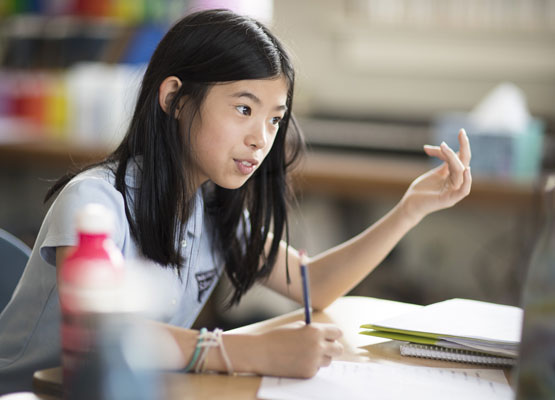
We Make Connections!
Whether it’s collecting field research in tidal pools, celebrating medieval festivals, or bringing Shakespeare to life on stage, we make connections in a variety of ways to subjects we are studying. Cross-curricular integration is central to the Park Street School experience. Art, science, math, drama, physical education, design learning, character development, literature, and music are intentionally interwoven throughout the day. Doing so makes learning real and tangible. It sets us apart.

Experience Integrated Learning: Become a Knight in Fourth Grade!
On our journey as a page on a quest to knighthood in fourth grade, we read King Arthur and His Knights of the Round Table by Roger Lancelyn Green. It fills our minds with images of lords and ladies as well as knights and their codes of chivalry. While reading, we also discover how important plot and setting are for storytelling. In Music, we hear the haunting sounds of Gregorian chant, discover how different music notation was in the Middle Ages, and learn terms like monophonic, syllabic and a cappella. We also listen to ballads of contemporary bards like Simon and Garfunkel and talk about how Medieval minstrels passed down music to the next generation. In addition, we realize principles of rhythm, balance, pattern, and unity that are reiterated in Art class.
During our quest, our knowledge grows continuously. We discover the roles monasteries and Benedictine monks played in shaping the culture and learn of Thomas Becket in Canterbury Cathedral, Eleanor of Aquitaine, and the Black Death. We are introduced to rural towns as centers of commerce with guilds and apprentices and learn about fiefdoms and nomadic tribes rising in Western Europe. We also must complete a series of required chivalrous tasks including holding the door open for others or helping a friend into a chair. For our tournament during gym class out on the Boston Common, we design our own coat of arms and make knights’ armor and helmets.
We engage in activities such as pounding out paper to create illustrated manuscripts and examine Gothic architecture including the Chartres Cathedral and Notre Dame in Art. While doing so, we realize how spires, flying buttresses, and pointed arches create spaces that invite people to consider the majesty of God. We also discuss how churches were built, designed for people to stand, and tell stories in artwork for those who did not read. In addition, we practice step-by-step drawing of Gothic cathedrals with watercolor technique.
For the culminating banquet, we prepare monologues representing medieval men and women in various roles. We also demonstrate our acquired knowledge of Medieval weaponry and castles, as well as components of the Code of Chivalry, such as protecting the weak, being generous to the poor, and showing marked courage. Finally, we kneel in the presence of parents and friends and are knighted — our quest complete!
Deepening Connections Across Subjects
Drama, Music, and Art — Interwoven into the Fabric of Lessons
Art, music, and drama help us interact with content in multiple ways — to connect more deeply. Singing songs cowboys sang around campfires or that African American slaves hummed in the fields helps us imagine life in the 1800’s. Fashioning our own Renaissance chairs out of clay in art or creating group tableaux to illustrate Grecian wars helps us bring these periods of history to life.

Design Learning — We Build, Collaborate, and Realize
Light bulbs go off! Building our own Roman chariots or designing our own Viking sails makes learning personal. We marvel at the engineering capability of the ancient Romans while building Roman aqueducts. As we watch the 3D printer create a Viking long ship, we imagine pulling on the oars. As we build keel and flat boats, we realize how innovative American pioneers were as they moved west, expanding the nation’s borders.

Integrating Goals And Objectives Within A Content Area
We learn a lot in one lesson. At the Preschool, students make slime to mimic a fish’s slippery skin covering. We learn that the covering protects them from predators. While making the slime, we learn about portions using measuring cups (math), new vocabulary words like “texture” (language), and what happens when we mix different ingredients together (science). We stretch our fingers to play with the slime (fine motor) and feel how cold, slimy, and stretchy it is (sensory). We accomplish goals and objectives with integration while creating slime!

How Our Learning of History and the Bible Cultivates Critical Thinking
Learning from the Bible, literature, and history at the same time allows us to grapple with different ideas at the same time, which sharpens our thinking. While studying about the Civil Rights movement in fifth grade, slavery in the 1800s, or learning about the treatment of Native Americans as pioneers moved west, we compare peoples’ choices in history with God’s ideas of how to treat others who are uniquely designed and created in his image.

